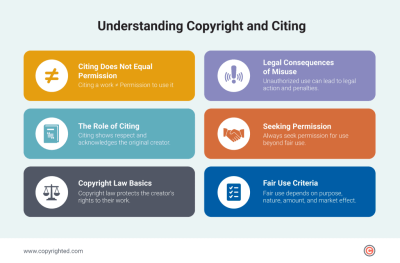Adobe Stock is a platform that provides photographers and videographers a way to license their work to individuals and businesses. To use the platform effectively, it’s important to understand the role of model and property releases. These legal documents protect both the creator and the user of content, clarifying the usage rights and ensuring that all parties are aware of the terms of the stock images being used.
What is Adobe Stock and How Does It Work

Adobe Stock is a stock photo and video service integrated into Adobe Creative Cloud, allowing users to buy and sell high-quality visual content. Contributors upload their images, videos, and templates, which can be licensed by users in various creative projects. The marketplace operates on a royalty system, where contributors earn a commission every time their work is downloaded. Users can search for content based on various categories, keywords, and licenses suitable for their projects, streamlining the creative process and enhancing productivity.
Importance of Model Releases in Stock Photography

Model releases are essential legal documents that grant permission for the use of a person’s likeness in visual content. In stock photography, having a signed model release ensures that photographers can legally sell images featuring identifiable individuals. This protects the rights of both the model and the photographer, preventing potential legal issues stemming from unauthorized usage. Without such releases, images may be limited in their marketability or even retracted by Adobe Stock. Additionally, obtaining a model release fosters trust and transparency between photographers, models, and users, ensuring a professional approach to content creation.
What a Model Release Should Include

When working with models for your photography or videography projects, having a comprehensive model release is crucial for both legal protection and ensuring that you can use the images commercially. But what exactly should a model release include? Here’s a quick breakdown:
- Contact Information: Full name, address, phone number, and email of the model.
- Grant of Rights: A clear statement that the model grants you permission to use their likeness in the specified ways, such as for commercial purposes, advertising, or in any media format.
- Project Description: A brief description of how the images will be used. This part ensures transparency and keeps both parties on the same page.
- Duration of Use: Clarify how long you can use the images. Is it perpetual, or does it have an expiration date?
- Compensation: Note whether the model will receive compensation and how much, if applicable. This could also include any details regarding royalties or additional payments if the images are sold.
- Release of Liability: A clause that protects you from any legal repercussions that might arise from the model’s likeness being used.
- Signature and Date: The model’s signature and the date the release was signed are essential for legal validity.
Having all these components in your model release helps protect both you and the model, ensuring a smooth collaboration and clear understanding of rights and responsibilities.
Property Releases Explained and Their Significance

A property release is another vital document, especially when your work features private property. But what exactly is a property release, and why is it so significant? Let’s dive in.
A property release is a legal document that grants permission from the property owner to use images of their property for commercial purposes. This is particularly important when your photography includes recognizable features such as:
- Private homes
- Commercial buildings
- Artwork or murals
- Unique landscapes or structures that are identifiable
Without a property release, you could face legal issues from property owners if you use their property in a commercial context without their consent. Here’s why having a property release is significant:
- Legal Protection: It shields you from potential lawsuits regarding copyright and property rights.
- Builds Professional Relationships: Respecting property owners’ rights fosters a good working relationship and reflects professionalism.
- Marketable Content: Having both model and property releases can broaden your ability to license images, thus increasing your earning potential.
In summary, securing a property release helps ensure that you can use your creative work without legal worry, promoting both your artwork and your integrity as a content creator.
How to Obtain Model and Property Releases Legally
Obtaining model and property releases is a crucial step for anyone looking to sell images on Adobe Stock or any other stock platform. But how do you do it legally and ethically? Here are some steps to ensure you’re on the right track:
- Draft a Clear Release Form: The release form should clearly outline the rights being transferred. Make sure to specify what the model or property owner is consenting to. This includes how the images will be used, whether for commercial or editorial purposes.
- Get Consent in Writing: Verbal agreements aren’t enough! Always get written consent from your models or property owners. This protects both you and the individuals involved.
- Use Professional Templates: There are many professional templates available online tailored for model and property releases. Using a template can save you time and ensure you don’t miss any legal clauses.
- Include Important Details: Be sure to collect information such as the full name, address, and contact details of the model or property owner, along with the date of the release to keep your records clear.
- Seek Legal Advice if Needed: If you’re unsure about the legal language or your obligations, it’s always a good idea to consult a legal expert. This investment could save you headaches down the line.
By following these steps, you can obtain model and property releases that not only protect you legally but also build trusting relationships with those you’re working with.
Common Mistakes to Avoid with Releases on Adobe Stock
When dealing with model and property releases for Adobe Stock, several pitfalls could jeopardize your submissions. Here’s a rundown of the most common mistakes to watch out for:
- No Release for a Recognizable Face: If you’re photographing a person whose identity is recognizable, always secure a model release. This is essential to avoid issues with privacy and consent.
- Using Images without Proper Documentation: Submitting images without proper releases can lead to immediate rejection from Adobe Stock. Always double-check that you have all necessary documentation before uploading.
- Inadequate Details in Releases: Failing to include vital information—like the date, location, or scope of use in the release—can void its legality. Ensure your releases are comprehensive.
- Assuming Releases are One-size-fits-all: Different situations require different releases—what works for one project may not work for another. Always tailor your releases to fit the specific context of each shoot.
- Not Keeping Copies: Always retain copies of signed releases. Should questions or disputes arise, having these records can be invaluable.
By avoiding these common mistakes, you’ll save yourself a lot of potential trouble and keep your Adobe Stock submissions running smoothly!
Frequently Asked Questions About Adobe Stock Releases
When diving into the world of stock photography and potential legal considerations, many questions pop up about model and property releases. Let’s tackle some of the most frequently asked questions to help demystify the process.
What is a model release?
A model release is a legal document that grants permission from the person(s) in a photograph to use their likeness in marketing or commercial endeavors. This is crucial for protecting both the photographer’s and the subject’s rights.
Do I always need a model release?
Not necessarily! If your image is being used for editorial purposes or the subject was in a public setting, a model release might not be required. However, it’s always safer to have one for commercial use to avoid potential legal issues.
What about property releases?
A property release is similar but pertains to private property. If your image features recognizable property, like a building or artwork, you should obtain a property release to ensure you can use it commercially.
Can I use images without a release if people or property are not the main focus?
In some cases, yes! If people or property are incidental to the main subject, you might be in the clear. But remember, if they are identifiable, it’s better to play it safe.
How does Adobe Stock handle releases?
Adobe Stock requires that you submit releases alongside your images when they are needed. This ensures their marketplace remains compliant and protects both contributors and buyers.
Best Practices for Using Model and Property Releases
Understanding how to effectively use model and property releases is essential for any photographer looking to sell their images on platforms like Adobe Stock. Here are some best practices to keep in mind:
- Always get a signed release: It’s best to have a signed model or property release before you even start editing the image. This way, you won’t risk missing documentation later.
- Use clear language: Make sure the release form is straightforward. Avoid legal jargon that might confuse your subjects. A clear understanding helps everyone feel comfortable!
- Keep records: Store your signed releases in a safe place—both digitally and physically. This will save your skin if there’s ever a question about permissions.
- Review your releases: Familiarize yourself with your model and property releases frequently. Laws and regulations can change, so staying updated is key.
- Communicate openly: Before taking photos, inform your models about how their images will be used. Openness builds trust and promotes a positive shooting environment.
By following these best practices, you’ll not only protect yourself legally but also foster respectful and transparent relationships with your subjects and property owners. Happy shooting!
Understanding Adobe Stock’s Model and Property Release Requirements
When contributing to Adobe Stock, understanding the intricacies of model and property release requirements is crucial for ensuring that your assets are legally compliant and can be successfully sold. Here’s a breakdown of what you need to know regarding these essential legal documents.
What is a Model Release?
A model release is a legal document that grants permission from an individual to use their likeness in commercial projects. This is particularly important when your images feature recognizable people. Key elements of a model release include:
- Subject’s Consent: The individual depicted must consent to the usage of their image.
- Scope of Use: The release specifies how the images can be used, including any restrictions.
- Compensation Detail: If any payment or benefits were exchanged for the use of the likeness.
What is a Property Release?
A property release is a document that allows you to use images of private property such as homes, artwork, or branded products in commercial contexts. Important aspects of a property release include:
- Property Owner’s Consent: A signature from the property owner is required.
- Detailed Description: A precise description of the property being photographed is crucial.
- Usage Rights: Clearly stated rights regarding how the images can be used.
Key Considerations for Adobe Stock Contributors
When submitting images to Adobe Stock, ensure that:
| Requirement | Details |
|---|---|
| Model Release | Required for images featuring identifiable individuals. |
| Property Release | Required for recognizable private properties. |
| Valid Releases | Must be signed and dated; electronic signatures are acceptable. |
In conclusion, navigating Adobe Stock’s release requirements is essential for maximizing the potential of your assets. By securing proper model and property releases, you can ensure a smoother submission process and open up more opportunities for sales on the platform.


